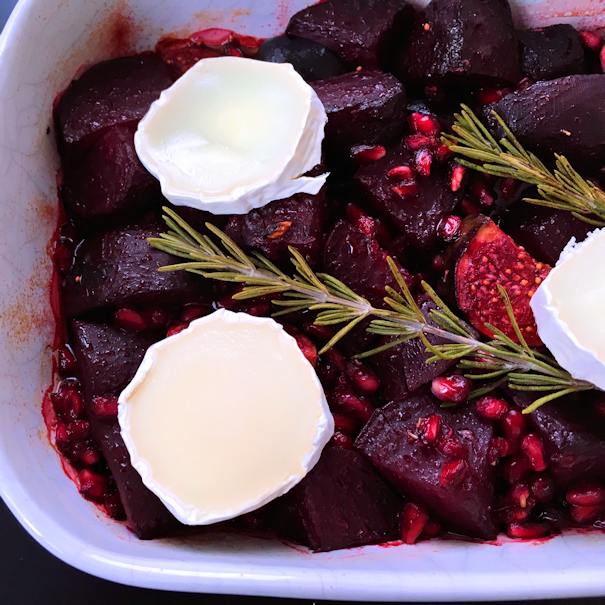Beetroot or beet as it is popularly known over the ocean, is a kind of both over- and underrated vegetable. Overrated mainly in fine dining establishments, where roasted cubes or purple purée on its own merit a whole one course. But how often do you cook it at home? You see? Precisely my point – it’s severely underrated in everyday cooking.
I think it’s all the fault of those ready-cooked, vacuum-foiled, vinegar-soused beetroots that used to be the only form of the vegetable sold in the shops in the UK.
Unspeakably hideous, they used to be dumped into old school ‘salads’ with a few leaves, chopped boiled eggs and a tomato. They must have instilled the belief in customers that it’s impossible to cook beetroot at home from raw, since it was the only root veg sold thus.
I think the times and cookery mores have changed significantly, but I still think old beets need a push. And that’s because they are one of the best things to eat!
Beetroot is low in calories, which is obvious, and rich in fibre and essential nutrients. But it also contains betalain, a pigment compound which is quite magical. Those compounds, found in beetroot and Swiss chard, have potential anti-cancer properties and certainly offer anti-inflammatory and antioxidant benefits. Nitrates in beetroot help lower blood pressure and they may actually help us work out by increasing cardio endurance.
Here is my call then to go out there and stock up on beetroot. What not everyone probably knows, their leaves are as edible and tasty as those of chard or spinach, which beetroot is related to. It also does not just come in a purple hue: there are crimson, striated, yellow and completely white beetroots if you’re lucky to get some or want to chalk it up for next year’s planting.
How to cook them? First of all, they are delicious raw, especially but not only the fancier varieties like Italian chioggia aka candystripe, golden beets or white, though the last are lacking in the healthful pigment, obviously.
To prepare them in salads, just slice smaller roots thinly for a herby salad. The ordinary purple specimen should be peeled and grated, and you can use a mix of raw and cooked ones for a salad too.

Cooking beetroot is really easy. Washed and trimmed, but not too severely so the juices don’t leach, drizzled with olive oil and sprinkled with coarse salt, they should be wrapped in foil and baked for about 45 minutes to an hour, until tender to a prodding pointy knife. You can cook a big batch of them and keep in the fridge cooked, but without any vinegar please.
The only caution concerns their colour, and how they try to turn everything around them purple. Simply wear gloves to prepare them, when peeling cooked ones, do it under running water. And when roasting them with other vegetables, set them in a dedicated corner of a baking tray.
Indeed roasted beetroots are gorgeous, on their own with honey and thyme, twice roasted with pomegranate and figs, or in company of other root vegs and bulgur wheat. They can also be indulgent and creamy or cheesy, like in its own gratin or in an autumnal tian.
They can be grated and shaped into delicious rosti, which is not only ever made from potatoes. And they also make rather an interesting loaf of bread, if you’re a keen baker.
The pigment is widely used to colour various dishes, and you should try making gravadlax, cured salmon, at home: it will look splendid marinated with raw beetroot! That’s also how you can make excellent Filipino bacon, pork tocino: using beetroot juice instead of the exotic annatto fruit.
I hope my little beet-promo is useful and encouraging to buy and eat more of the red stuff. I'm rooting for beetroots!